The impeccably tailored ticket checker on the Shinkansen enters the reserved coach with an exquisite bow executed with ease and then proceeds to request-verify-return tickets from each awake person taking care to prefix and suffix each interaction with an abbreviated bow. This he does with a rapidity that takes nothing away from the comfort provided by his gentility. He does not disturb sleeping persons. If you've spent just a day in Japan, you can easily understand why. The similarly attired and mannered female attendant's charm is not good enough to win from us the 500 yen she expects for her "ice kohee". One of several Japanese English phrases we encountered in the past 2 days (ok, from guidebooks). Other gems include "forku" (fork), "knifu" (knife), "supun" (spoon). Native Tamil speakers will have no problems with the "-u" endings in such words. One of Tokyo's highlights is the Shinjuku district, inspiration for many futuristic sci-fi visions. When the suffix -ku (meaning city) is added to it, it makes for a very euphonious Shinjuku-ku. Roll it off your tongue for a unique and not unpleasant sensation.
To our disappointment all morning Shinkansen trains to Kyoto had no seats on the right side of the train still available. The earliest train with the sought-after Mt. Fuji view was at 9:30. Since our jet lags are still in operation and our waking time is 4 am, this is too late for our departure. We reluctantly booked left-side seats for the 8:03. We made it to the Shinkansen ticket counter at 6:49 and there was enough time for us to get on the 7:03 (despite the presence of 10 people in front of us in the ticket queue with each transaction involving many bowing, nodding pleasantries). We were quick to spot the iconic Japanese mountain across the aisle over the heads of the sleeping passengers (some even had their window shade drawn over the coveted right-side windows). Fortunately, the vestibule had a window and we both took turns to view the mountain and take some pictures. Meanwhile, the JR staff kept passing through from coach to coach. Every entry and exit across a vestibule is dramatically parenthesized by a smile and a bow.
Shibuya station is Churchgate (a suburban train terminus in Bombay-Mumbai) transformed in some neat-freak's feverish imagination. The Bombay version is the natural behavior of our species. The Shibuya transform is clearly a fetish. A series of busy street intersections where the traffic lights stop at intervals and let all pedestrians cross the entire intersection. It is not a sight you can easily forget. Even the locals who do this everyday seem amazed by their own spectacle and try and capture this on their cameras.
The above mentioned Shinjuku, Shibuya along with Tokyo's other highlights all lie on a single suburban circular railway line. The phrase JR Yamanote may suggest a patriarch in a Japanese remake of Dynasty, but it is actually that very circular line with trains going clockwise and anti-clockwise. The schedules seem to suggest that they run every few minutes or so, but our 8 or so trips in the past two days did not involve a wait of more than 2 minutes. The electronic displays on this line may not impress tech-geeks but they are a marvel in terms of user experience. A tracking icon moves in a circle indicating current position and the approximate time left for the next several destinations that are in the train's immediate future (30 minutes). Even the word "approximate" is used very approximately in that our arrival times rarely departed from the original estimate, unless you view time through a stop watch with millisecond precision. Interspersed with this are a series of images that provide information on the conveniences available at each station on the way (escalators, elevators, toilets etc.). I maybe imagining this but I detected some directional indicators on the escalators as well.
All displays and announcements are bilingual in Japanese and English. The Japanese announcements are delivered in the cantabile (song-like) manner that you actually see most Japanese use. I did not see a single instance of the Toshiro Mifune style of harsh phrasing, but then I am probably guilty of an anachronism here. The English version is pleasant but unmusical as befits that language. But there is a pause before the station name which is always delivered in the song-like manner before the announcement resumes in "lean, unlovely" English. Our favorite station names are Takadanobaba and Nishi Nippori. Even the name Tokyo is pronounced with an exaggerated exclamation (as if it is an answer to a quiz question that the participant should have known but could not remember in time).
Holders of the JR Pass (only available for purchase outside Japan) are entitled to ordinary travel for a limited period. It includes the JR Yamanote line and it is a good thing since many of Tokyo sights are on its circuitous path. On this line, you are not obligated to go through the electronic "turnstiles" but pass through a manned corridor and display your laminated pass to a uniformed JR official. During our trips the past 2 days, all of them bowed with extreme care and held out their palms to conjure an imaginary red carpet for us to proceed. The odd grumpy one merely smiled pleasantly and nodded. Should probably be sent back for re-education in their, no doubt, excellent manner schools.
The 4 meals we've experienced so far in Tokyo have been extremely challenging to us vegetarians. When at home in California, we've always avoided Japanese cuisine due to its seeming unfriendliness towards vegetarians. If ever there was a time to cure ourselves of this perception, it was now. The news is still not good for vegetarians. It is not that the language problem gets in the way (we had memorized the "watashi wa niku wo tabemasen" phrase compounded with hand gestures that conveyed our aversion to niku (meat), sifudu (seafood), tori (chicken)) - have I closed all the parentheses here? -, but the lack of English menus, the mechanized ordering gadgets that only contain numbered pictures of food and the Japanese fondness for bifu, porku (ok, I just made those up) and sifudu. The Buddha-cuisine culture has not traveled across the China sea. But this was more than compensated for by the willingness of the persons at some establishments to go out of their way to help us. We eventually managed to eat 4 Japanese vegetarian meals (we tried to avoid anticipating future experiences by saying No to Chinese, Vietnamese, Thai and Indian fare). One of these was at the automatic ordering gadget where the cook actually walked out with us, presented the pictures with "bifu", "porku" etc. for which we provided our semaphoric feedback. After some complicated mathematical computation, which he deftly executed in his head, he came up with the number 12. He led us to the machine and guided us through the insertion of currency and pressing 12 to dispense tickets for the sought after item. The Tokofuji Soba (aka 12) was delicious.
The Ginza district just south of Tokyo station has plenty of glitzy sights. We enjoyed our brief stop at the Sony building interacting with their state-of-the-art technology. 3D TV maybe old hat, but 3D camcorders are new. We looked at 3D images of a display through our viewing glasses when we were surprised by an attendant who moved the camcorder to point at us so we could see our 3D electronic versions (come to think of it, have we ever looked at our own selves in 3D?). Another camcorder model with stunning image stabilization software demonstrated by a vibrating platform on which the camera was mounted. The unmodified shaking image was shown on one screen. Juxtaposed next to it was another screen where the image was stock still. Amazing. The Nissan gallery a couple of blocks away under-delivered. On display was the Nissan Leaf on a pedestal.
The Tsukiji Fish Market south of Ginza is just 10 minutes from the Nissan Gallery (and extravagantly signposted all the way) but the city is dramatically transformed from hi-tech to serious food business. It requires a pre-dawn visit to the market to get on the observation deck of the Tuna fish auction that takes place between 5 am and 6 am. Only 60 visitors are allowed for each of the 2 sessions and they are on a first-come-first-served basis. We caught the first subway train Thursday morning and arrived at Tsukiji at 5:23 (in bright early morning light) only to find that all reservations were gone! Disappointed foreigners looking dazed and confused as the custom vehicles designed to carry fish (presumably) zipped around the warehouse trying not to run us down. We were clearly trespassing in an area of serious commerce. All that needed to be done was to walk around the open shops. This turned out to be a very rewarding activity with several shop owners offering free samples. One of them delighted in our amazement at the transformation he had effected in soybeans into delightful dry and wet treats and rewarded our expressions of joy with even more treats. His demeanor did not change one bit at our not rewarding him with any business.
We saw for ourselves the "baby doll" or "Lolita" phenomenon that we had heard of. The obsession with women dressed up as school girls. The Akihabara Electric Town area (yet another stop on the stellar JR Yamanote line) was full of such dolled up young women charged with enticing passersby into entering stores filled with all manner of electric hardware and software. They seemed to be having a good time in the sunshine. Even the English language mobile phone plan charts had our heads in a spin. Too much choice is definitely a bad thing.
What is with those English language headings on signboards which contain only Japanese text? Why would one put up a large sign saying "Real Estate Gallery" when all the information in it are in Japanese only? We saw this often in city and park maps all over the city.
All the streets in Japan look washed and fresh painted. Not a piece of litter anywhere. This can't come from anywhere but within. We really did not see a lot of litter bins in public. I guess they are needed in abundance in places where people have a tendency to litter. The Japanese are certainly not afflicted with that malaise.
Day One of our RTW trip began dramatically with an earthquake at 4 am which we experienced from our 11th floor room in a Narita hotel. We found no references to it in the media but we did see the hangers oscillate, the bed shake for several seconds.
Narita is quite remote from Tokyo. There are no Shinkansen trains to the city from the airport and even the Narita Express takes 80 minutes to cover the distance. Repeated announcements warn the unwary to be prepared in advance to exit at Tokyo station due to anticipated crowds with a thoughtful postscript (in case you forget the combination to the cable lock for your luggage, you can pick it up later at etc.).
Thanks for reading. More to come from Kyoto and beyond!
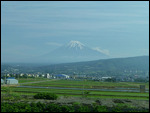
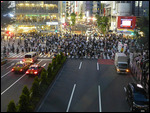

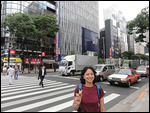


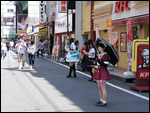
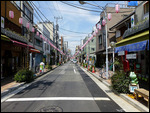
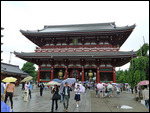
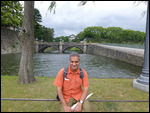
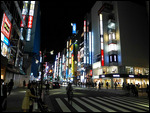
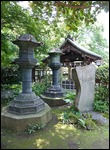
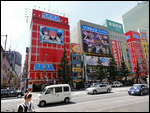
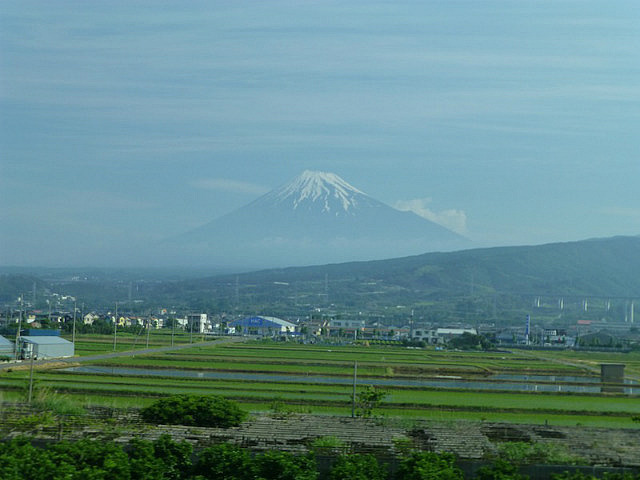

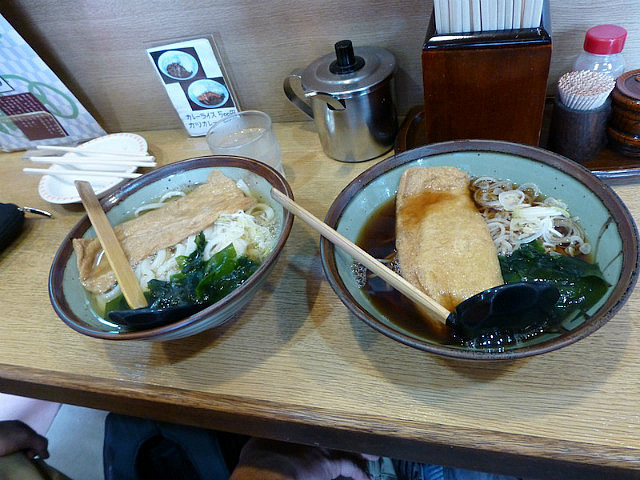
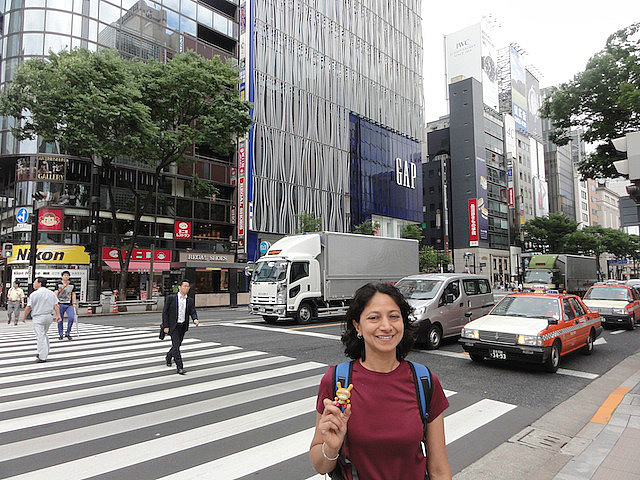
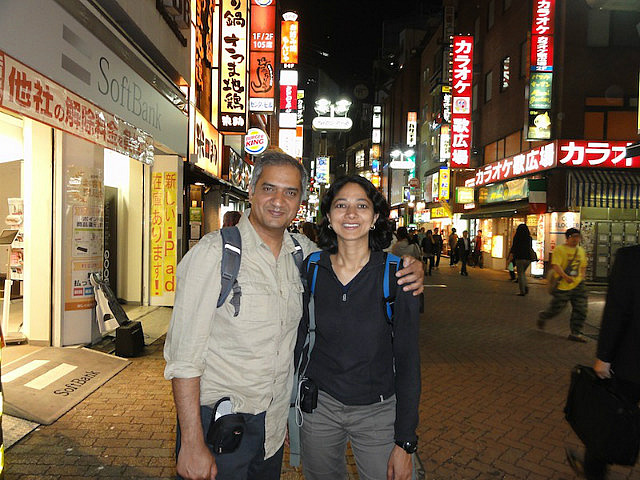
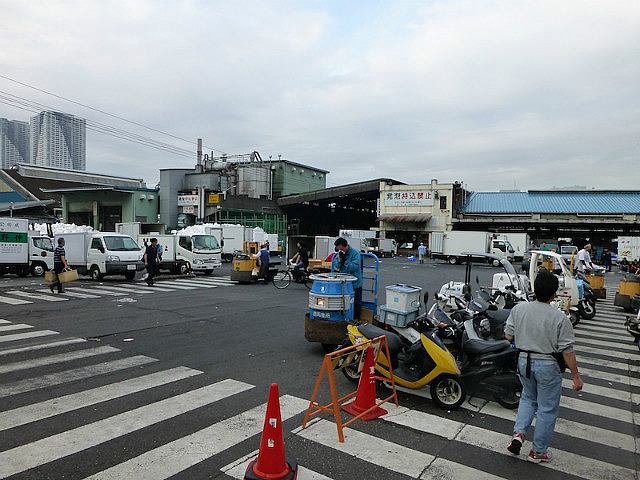
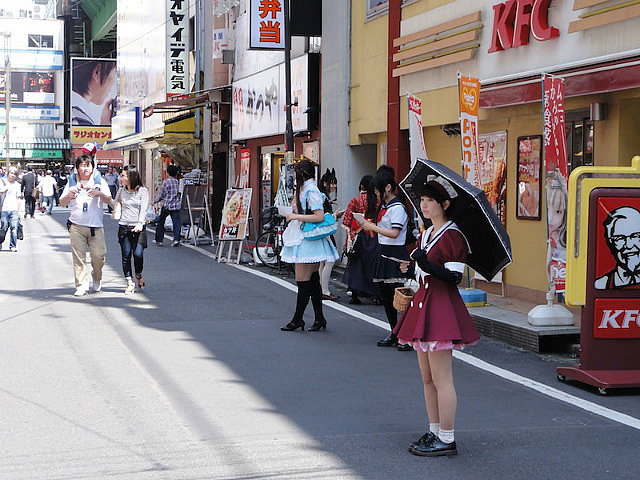
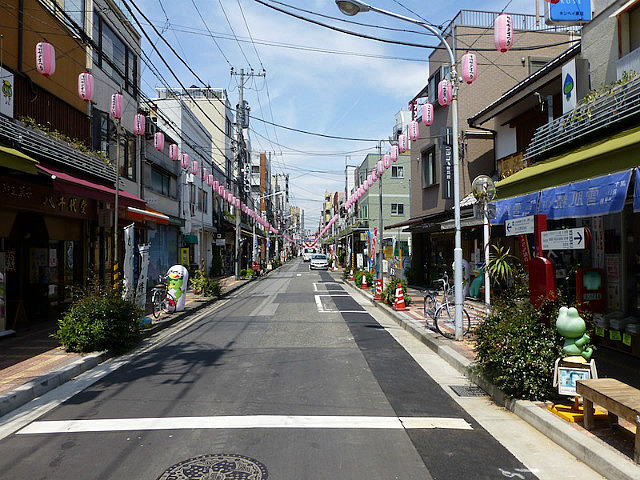




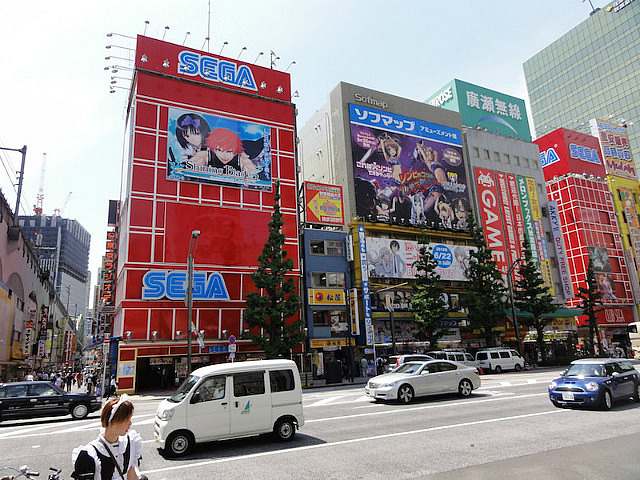
Comments